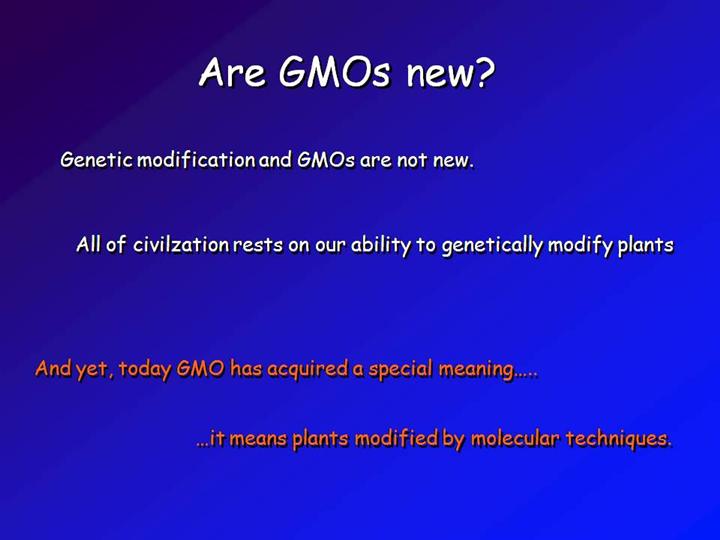 |
As you can
see, genetic modification of crop plants is far from new. Before the 20th
century, people did not understand the underlying genetic and biochemical
basis of heredity. But they were still able to modify plants, as is obvious
from the history of our major staple crops, corn, wheat and rice. That is
because change (a genetic change is called a mutation) is not only part of
the chemistry of DNA, the hereditary material, but because the DNA is
exposed to radiation from the sun and space, as well as to harmful
chemicals, such as reactive oxygen species, produced in cells themselves the
the course of their normal activities. Among the plants normal activities
are harvesting energy from the sun and converting it to sugars and breaking
down high energy compounds to live. During the second half of the 20th
century, geneticists, biochemists and molecular biologists learned a great
deal about the structure of DNA, how information is coded in the DNA and how
it is decoded in cells. In time, they figured out what a gene was and how to
move it from one organism to another. In the following slides, I will
explain how novel genes are introduced into plants.
|
